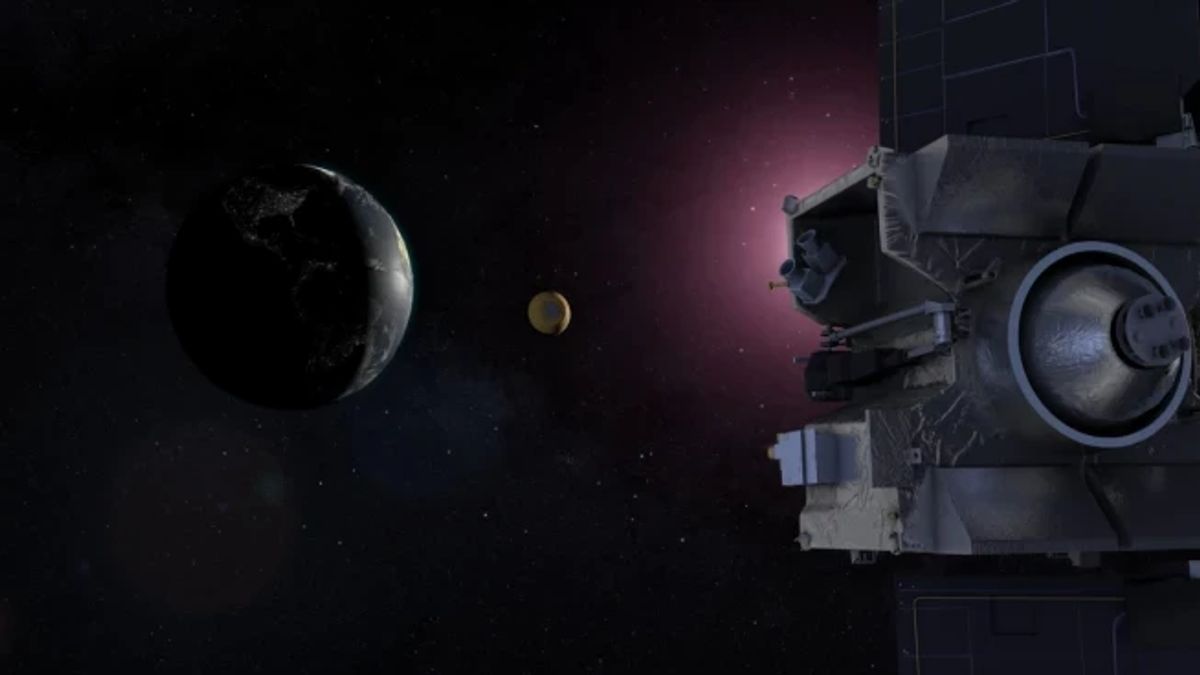JAKARTA - NASA's OSIRIS-REx spacecraft managed to sample from the asteroid Bennu in October 2020. Then in May 2021 the spacecraft returned to Earth to drop the sample. This week the spacecraft maneuvered track corrections to stay on Earth, where it was scheduled to arrive in September 2023.
NASA has also shared more details on how exactly the spacecraft will send asteroid samples to Earth, as this is not a simple process.
OSIRIS-REx is not designed to be able to handle the extraordinary heat, friction, and other forces required to travel through Earth's atmosphere so that it has no way to land on the surface. Instead, it will fire capsules containing asteroid samples into the atmosphere and only these capsules will arrive at the surface.
The maneuver will also be complicated, as Mike koal explained, OSIRIS-REx project deputy manager at the Goddard Space Flight Center, NASA, said in a statement.
"If the capsule is tilted too high, it will miss the atmosphere," he said, as quoted by Digital Trends. "The angle is too low, then the capsule will burn in Earth's atmosphere."
This is part of the reason why the spacecraft needs to maneuver this trajectory, to ensure that it will be in the right place in September next year to be able to dispose of the capsule in the right angle.
"Over the next year, we will gradually adjust the OSIRIS-REx trajectory to target spacecraft closer to Earth," said Daniel Wibben, track design leader and maneuver with KinetX Inc., which is the company responsible for navigating the spacecraft. We have to cross Earth's orbit at the time Earth will be at the same location."
The recent trajectory maneuver is the first time a spacecraft has made on its return journey, with further maneuvers scheduled for July next year.
Once the capsule is released into the atmosphere, it will slow itself by parachute as it descends. The capsule is expected to land at the appropriate planned location in the Utah Test and Training Range Air Force in the Great Salt Lake Desert, from which it can be collected by the Air Force and Army, then taken to the facility for scientific investigation.
The English, Chinese, Japanese, Arabic, and French versions are automatically generated by the AI. So there may still be inaccuracies in translating, please always see Indonesian as our main language. (system supported by DigitalSiber.id)








